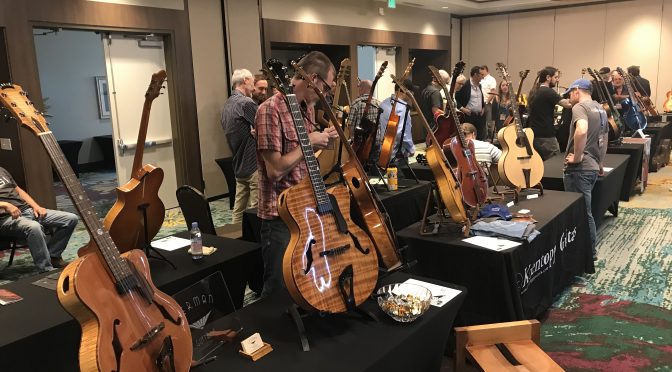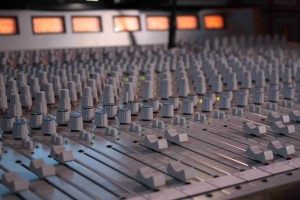
What does it mean to “be of service”, in this age of digital access and high speed communication? In a culture where immediate gratification is a top priority, and the tools of production are ubiquitously and easily accessible. We have entered an age where the form of the tools, the surface, the “GUI”, has begun to replace the craft of experience and mastery. The surface of the tool, and a basic grasp of that interface, has become the means by which expedience has replaced craft.
The acquisition of Mastery and Craftsmanship is an important aspect of service. Mastery and Craftsmanship takes time. It takes failure and recovery. It is the steeping process that occurs in the crucible of time and attention and unflagging effort. Real problem solving is about having lived and worked through so many different types of scenarios and solutions, that multiple options and outcomes present themselves easily when a need arises.
My favorite story recently is about the nature of craftsmanship: “There is an old story of a boilermaker who was hired to fix a huge steamship boiler system that was not working well.
After listening to the engineer’s description of the problems and asking a few questions, he went to the boiler room. He looked at the maze of twisting pipes, listened to the thump of the boiler and the hiss of the escaping steam for a few minutes, and felt some pipes with his hands. Then he hummed softly to himself, reached into his overalls and took out a small hammer, and tapped a bright red valve one time. Immediately, the entire system began working perfectly, and the boilermaker went home.
When the steamship owner received a bill for one thousand dollars, he became outraged and complained that the boilermaker had only been in the engine room for fifteen minutes and requested an itemized bill. So the boilermaker sent him a bill that reads as follows:
For tapping the valve: $.50
For knowing where to tap: $999.50
TOTAL: $1,000.00”
The lost art of “knowing where to tap” is an essential ingredient in terms of how I perceive meaningful service and craftsmanship. I believe that to offer what we do, as Craftsmen/teachers/artists/problem solvers/etc…, in service to others, is a Noble act.
Over the last 35 years I have come to observe certain core truths for me, about how I need and want to conduct “business”. Things like selflessness, craftsmanship, integrity, punctuality, accountability, timely responsiveness, reflective and active listening, and a passionate desire to find the best possible solutions for my clients, are at the heart of my business and service perspective.
My clients are sacred to me, (and I use that word very carefully as I clearly understand the weight and important nature of that particular word, and I also recognize both the inherent importance of the client relationship as being unique and powerful), as they represent an opportunity for me to not only be of service, to utilize my aggregate skills and experience to solve complex problems, to fulfill my own needs of creating and participating in vital purpose, as well as generate livelihood for me and my family. I take that commitment seriously.
A key component for increasing quality of Life and connecting service and craftsmanship is described here:
“The three components of human happiness are a vital sense of purpose, beauty, and a sheltering sense of community. We always start by relying on ourselves and looking for these three things in power, order, and fellowship as the world understands them. Failing to find them there, we eventually seek them in the only way that makes sense-in Being, which transforms, fulfills and brings us to new life.” ~Karlfried Graf Dürckheim, Zen and Us
Work and career cannot just be entirely about the acquisition of material wealth, we need deeper connections and meaning that defines what we do, in combination with how we allocate the precious time we have here as human beings. Sacred collaboration and selfless service, for me, seems a logical and necessary aspect of what we do as Craftsmen, vendors and service providers in this Digital age of possibility and media production. Service to other is service to myself, because I know that I have participated in something that will go out into the world and have meaningful reciprocal benefit. Not just in the product created or the solution found, but in the unique and reciprocal connections created, and the opportunity to collaborate with others who have passion and vision and a desire to manifest in the world.
I am 100% certain that how I focus and utilize my skills and abilities to be of service and generate livelihood are a reflection of how I choose to live my Life. A great teacher once told me that “The quality of your life is dependent on the focus of your attention”. I choose to focus my attention on being of service and using my 40 years of experience and skills to help others. I am always looking for ways to combine my passion for service and craftsmanship with organizations and individuals who are seeking to collaborate in these ways.
The world is changing rapidly and there is a real and present need to re-imagine how we operate as an entrepreneurial culture. Imagine a world based on the ideals of mutual benefit and service? One in which the end result benefits everyone involved. Imagine a culture that shines a light on inclusivity, and honors service as a core value.
In this Digital age of unlimited potential I know that I choose this vision, and can see the benefits in my life and in the interactions I share with others seeking the same things. In this way I can live a life of service and also fulfill my own needs to explore and learn and creatively experience Life and career.
“The purpose of life is not to be happy. It is to be useful, to be honorable, to be compassionate, to have it make some difference that you have lived and lived well.”
— Ralph Waldo Emerson



